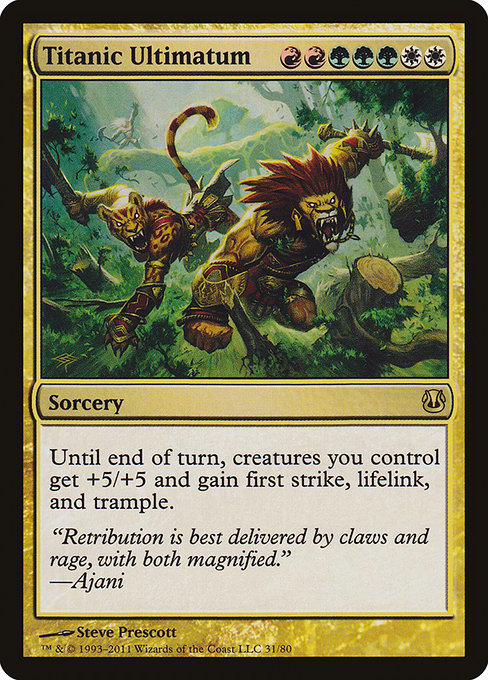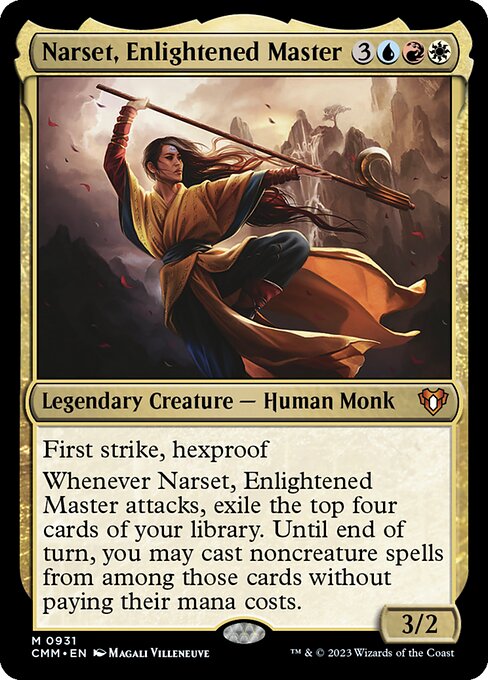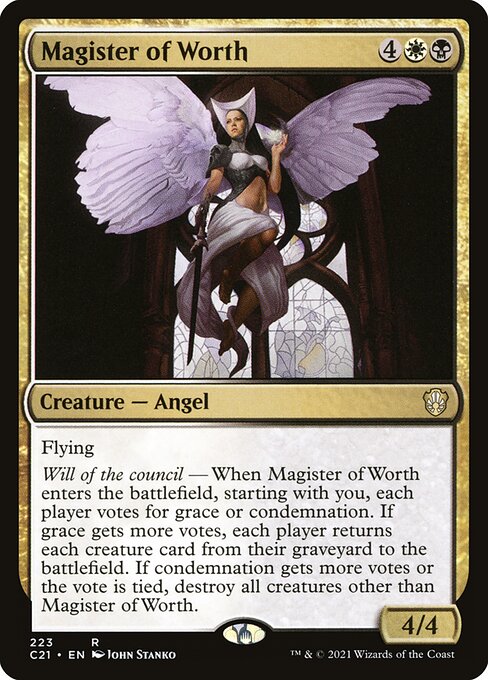In the bicycle industry, the phrase “N+1” is thrown around quite a bit. It’s short for N+1=Y, where N is the number of bikes you currently own, and Y is where you’d like to be. It’s used to justify growing your collection, and leads to things like having nine bikes in your garage. However, in the past few years of the industry, minimalism has been embraced more. Riders are pausing to reflect, and asking if they really need everything they’ve been sold over the years.
Magic players are at a similar crossroads. They’re looking at the sheer amount of products coming out in the past year, and are asking the same question. Does it spark the same joy that it once did? If not, then it’s time to move on; whether it be from an extra bike, or a Commander deck. I’ve always seen parallels between the cycling world and that of Magic, so I find this to be one of the closest links out there.
We Commander players love the thrill of designing a new deck, and the discovery of a new playstyle. This can lead us to owning more decks than we can comfortably maintain. Like the cycling world, this happens all the time. A new rider gets excited with their new hobby, and rushes out to get all of the things they need. But after the excitement of buying new things fades, all that’s left is the activity itself.
You don’t have to play Magic long before you encounter a story like this for yourself. You’ve built a bunch of decks and acquired tons of cards in the process, but you don’t enjoy playing most of them as much anymore. There are some growing pains that can happen in Commander, but plenty of constructive ways to navigate them. But maybe you have way too many Commander decks, and you want to reevaluate some things in your life. You pick up a pile you haven’t touched in months as ask youself, “is it time to retire this deck?”
Lets look at some ways to freshen up a forgotten deck before you commit to tearing it apart. You don’t want to have to unsleeve all those cards unless you have to, and maybe you’ll rekindle the love you once had with some of these tips. This process can also help clarify whether you want to keep that deck anymore, and by the end you can comfortably cast it aside knowing life will be better that way.
Step One: Change 7-10 cards
This is the easiest of the five, because it’s not uncommon to have a handful of cards that have been waiting in the wings. They may have been the last ten cards cut while brewing. Or they could be ones you’ve been wanting to try, but haven’t made the time to give them a go. This bullpen of cards is a great starting point to look at.
In your evaluation, you may find that the deck simply hasn’t been updated in a while, causing it to fall behind against the newer decks at the table. The past few years have brought us some powerful new staples, like Smothering Tithe, Arcane Signet, and Dockside Extortionist. If you’re still playing Explosive Vegetation instead of Circuitous Route, then this may be a sign that the deck needs an update.

A few months ago, I took my daily driver, Gahiji, Honored One, out for a re-tool. I found myself passing over it more frequently than not, and ended up making some changes that needed to happen. We end up getting really attached to some cards in our decks, and it causes them to linger beyond the point they should. For instance, I played Overwhelming Stampede and Titanic Ultimatum for years in Gahiji, and saw them as emblematic win conditions. However, cards like that can be some of the most important to cut, because they can fundamentally change how we feel about playing the deck.That was enough to give the deck a fresh look and feel, and I found new energy when playing it.
Between those edits and now, I wrote the Selesnya Guild Primer, and realized that I need to update Gahiji again to keep up with the power of green card draw. It’s a wonderful, never-ending process.
Step Two: Raise or Lower the Power Level
There is plenty of talk going around about power level in Commander, and this is an interesting way to shift your deck’s focus. For instance, you could cut back on tutors and other format staples like Rhystic Study, and play against decks in a lower power tier.
This presents a twofold change for an otherwise neglected deck. For starters, less consistency will lead to interesting new lines in gameplay. With less efficiency, there’s more room for flavorful bits that you’ve always wanted to play. It can take some time to dial in the appropriate power level, so the deck will need extra testing to get it in the sweet spot. Not only will it be more challenging to pilot, but you’ll be playing it against a slew of new decks in your local metagame. That presents interesting new challenges for your deck to overcome, which is enjoyable in and of itself.

As a note, some commanders set a certain precedent before the game even starts. Low-power versions of Narset, Enlightened Master and Zur, the Enchanter are two decks that frequently come with the tagline of “Don’t worry, it’s not of those builds.” People may or may not believe you when you say this.
On the other end of the spectrum, powering up a deck can give it some fresh energy. This is usually costly, of course, but something to slowly work towards. Generally-speaking, improving the consistency of your deck is a surefire way to get up to the next level in power. Cards like Sensei’s Divining Top, Scroll Rack, and Demonic Tutor are powerful options that can fit in a variety of decks. If you currently have two decks that are neglected, you can also try combining their best parts tobuild a powerful new deck to play.
Step Three: Switch to Another Commander in the Same Colors
Simply swapping out your commander for another in the same color identity can be either a simple change or a dramatic overhaul of your deck. One of the easiest ways to illustrate this is by looking at Commander precons, and swapping in one of the supplemental legends found in the 99. For instance, Commander 2019 buyers may have swapped Sevinne, the Chronoclasm out for Elsha of the Infinite. The whole of the deck might stay the same, but it immediately plays differently with a new commander.

A Keranos, God of Storms player would find themselves operating quite differently if they put Mizzix of the Izmagnus at the helm. If you already run an extra legendary creature in your color identity, then changing them out for a game might be enough for you to see if it’s a direction you want to go.
Commander swaps might not be as simple as these examples, but more work can be a net positive. Executing a drastic change requires heavy editing of the core, flavorful part of your deck that interacts with your commander. But at the end of the day, all it takes is twenty-ish new cards before your Hapatra, Vizier of Poisons deck becomes Slimefoot, the Stowaway. And with keeping the same color shell, staples like Assassin’s Trophy and Abrupt Decay can be moved right on over.
Step Four: Mix Up the Colors
This is more drastic, but can be just what you need. Of these five steps, it’s the most likely to overhaul a deck, and provide a far different experience.
By adding a color, you can address a weakness that the deck struggled with beforehand. For instance, an Izzet deck could add white to get better board wipes and removal. An Orzhov deck could add green to ramp and beef up their creatures. Potent multicolored cards will become available. This will not only change how the deck plays, but may make you able to bring it up a power level in the process. The extra color will make the strategy for versatile, and adaptable to situations where the prior deck faltered. And for decks that don’t have access to green’s ability to ramp and filter mana, adding another color means that you get a slew of new mana rocks to play with.
The fewer colors the deck had to begin with, the more likely you are to see a change in the play style by adding another one. Going from one to two colors means a lot more than going from four to five. This is also applicable when it comes to swapping a color. An Abzan turned Bant deck won’t feel nearly as different as an Izzet turned Rakdos deck.

Cutting a color offers an interesting challenge for deck builders. This can lead to a decrease in power level, since you’re posing more restrictions on yourself. Nevertheless, it can allow you to streamline your deck’s focus, and go after cards that were otherwise difficult to cast when you had more colors. What comes to mind are the cycle of lieges from Lorwyn/Shadowmoor, or the likes of Supreme Verdict and Cryptic Command.
Personally, I’ve gone through this process three times.
- My creature toolbox deck of Yisan, the Wanderer Bard turned into Izoni, Thousand-Eyed. I found that adding black brought on a lot of good graveyard recursion, and the ability to play one of my all-time favorites: Tortured Existence.
- Shattergang Brothers group slug turned into Mathas, Fiend Seeker politics. I found that going from Jund to Mardu allowed from some fun and interesting play patterns, and I leaned heavily on things like Magister of Worth and Oros, the Avenger.
- My control deck of Talrand, Sky Summoner turned into Sygg, River Cutthroat, and then into Vial Smasher the Fierce+Kraum, Ludevic’s Opus. I’m still grappling with this one, since I prefer to win through combat, but it represents an important concept of going outside your comfort zone.
Your rate of success will vary, but at the very least, this is the last gasp of a deck to become more interesting for you to play. Coincidentally, my Mathas and Vial Smasher/Kraum decks are on the chopping block for me. They’ve been enjoyable, but still suffer the fate of being passed over for others, such as my new rendition of Ilharg, the Raze-Boar.
Step Five: Retire the Deck
This is the end of the line. You may have tried all four of the other steps, and still don’t feel excited to play that deck. But that’s okay, because there are always new things coming down the pipe, especially for 2020. Branching off of Dominaria’s massive drop of 44 legendary creatures, and the success of Commander precons, the format has experienced a massive surge in popularity.
If none of the prior steps worked, it’s time to part it out for other decks and projects. A benefit of this is that all of your other decks receive an immediate power boost. Things like Damnation, Spellseeker, and Mana Vault are playable almost anywhere, so it’ll be like Christmas morning for the rest of your decks.
What’s important to mention is that retiring a deck does not mean that you failed in any way. It’s part of the learning process, and an important way of understanding ourselves as we grow and develop in the format. For context, I’ve been playing Commander since 2012, and my deck cemetery has at least ten occupants. It goes up one more if you count my ill-fated Lost in the Woods deck, which boasted Jolrael, Empress of Beasts and about 80 forests. Sometimes, you just have to hang it up…
Final Take
There are plenty of ways to make the old feel new again. Making these decisions can be difficult, but they offer exciting new directions to explore. Commander is changing more rapidly than ever, so embracing change has never been more important. If you end up changing a deck, and enjoy the new version, ask yourself this a month later: “Do I miss playing the older version of this?” If the answer is no, then you did the right thing.
Travis is a Virginia-based player and writer, who has been turning things sideways since Starter 1999. He primarily plays Commander, Pauper, and Modern, and has a passion for introducing new players to the game. When he isn’t attacking with red creatures, he can be found mountain biking or playing the guitar. You can follow his exploits here on Twitter and Instagram.

